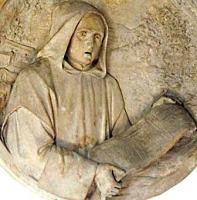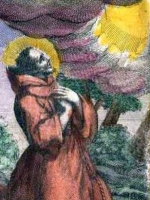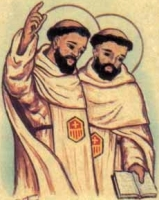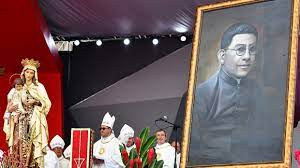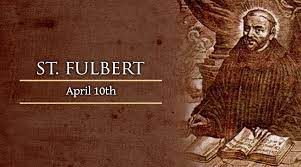Saint Gemma Galgani
புனிதர் கெம்மா கல்கனி
(St. Gemma Galgani)
லூக்காவின் மலர் (The Flower of Lucca):
லூக்காவின் கன்னி (The Virgin of Lucca):
பிறப்பு:
மரியா கெம்மா உம்பர்ட்டா கல்கனி
(Maria Gemma Umberta Galgani)
மார்ச் 12, 1878
காமிக்லியானோ, கபன்னோரி, இத்தாலி
(Camigliano, Capannori, Italy)
இறப்பு: ஏப்ரல் 11, 1903 (வயது 25)
லூக்கா, இத்தாலி
(Lucca, Italy)
ஏற்கும் சமயம்:
ரோமன் கத்தோலிக்க திருச்சபை
(Roman Catholic Church)
முக்திப்பேறு பட்டம்: மே 14, 1933
திருத்தந்தை பதினோராம் பயஸ்
(Pope Pius XI)
நியமனம்: மே 2, 1940
திருத்தந்தை பன்னிரெண்டாம் பயஸ்
(Pope Pius XII)
முக்கிய திருத்தலம்:
இத்தாலியின் லூக்காவில் உள்ள சிலுவைப்பாடுகளின் அருட்சகோதரியர் மடாலயம்
(Passionist Monastery in Lucca, Italy)
நினைவுத் திருநாள்: ஏப்ரல் 11
பாதுகாவல்:
மாணவர்கள், மருந்தாளுநர்கள், பாராட்ரூப்பர்கள் (Paratroopers) மற்றும் பாராசூட்டிஸ்டுகள் (Parachutists), பெற்றோரின் இழப்பு, முதுகில் காயம் அல்லது முதுகுவலியால் பாதிக்கப்படுபவர்கள், தலைவலி / ஒற்றைத் தலைவலி நோயால் பாதிக்கப்பட்டவர்கள், தூய்மையற்றவர்களால் பாதிக்கப்பட்டோர் மற்றும் இதய தூய்மையை நாடுபவர்கள்.
மரியா கெம்மா உம்பெர்டா கல்கானி ஒரு இத்தாலிய ஆன்ம பலம் கொண்டவர் ஆவார். கி.பி. 1940ம் ஆண்டு முதல் ரோமன் கத்தோலிக்க திருச்சபையில் ஒரு புனிதராக வணங்கப்படுகிறார். கிறிஸ்துவின் சிலுவைப்பாடுகளை ஆழமாக பின்பற்றியதால் அவர் "சிலுவைப்பாடுகளின் மகள்" (Daughter of the Passion) என்று அழைக்கப்படுகிறார். அவர் குறிப்பாக "சிலுவைப்பாடுகளின் அருட்சகோதரியர் சபையில்" (Passionists) வணங்கப்படுகிறார்.
கெம்மா உம்பெர்டா மரியா கல்கானி, கி.பி. 1878ம் ஆண்டு, மார்ச் மாதம், 12ம் தேதி, மாகாண நகரமான "கபன்னோரியில்" (Capannori) உள்ள "கேமிக்லியானோவின்" (Camigliano) குக்கிராமத்தில் பிறந்தார். கெம்மா, தமது பெற்றோரின் எட்டு குழந்தைகளில் ஐந்தாவது குழந்தை ஆவார். அவரது தந்தை "என்ரிகோ கல்கானி" (Enrico Galgani) ஒரு வளமான மருந்தாளர் ஆவார்.
கல்கானி பிறந்த உடனேயே, குடும்பம் காமிக்லியானோவிலிருந்து (Camigliano) வடக்கே "டஸ்கன்" (Tuscan) நகரமான லூக்காவில் (Lucca) ஒரு பெரிய புதிய வீட்டிற்கு இடம் பெயர்ந்தது, இது குழந்தைகளின் கல்வியில் முன்னேற்றத்தை ஏற்படுத்துவதற்காக மேற்கொள்ளப்பட்டது. கெம்மாவின் தாயார் "அரேலியா கல்கானி" (Aurelia Galgani) காசநோயால் பாதிக்கப்பட்டார். இந்த கஷ்டத்தின் காரணமாக, கெம்மாவுக்கு இரண்டரை வயதாக இருந்தபோது எலெனா (Elena) மற்றும் எர்சிலியா வல்லினி (Ersilia Vallin) நடத்தும் ஒரு தனியார் நர்சரி பள்ளியில் அவர் அனுமதிக்கப்பட்டார்.
இந்த காலகட்டத்தில் கல்கனி குடும்பத்தைச் சேர்ந்த பலர் இறந்தனர். அவர்களின் முதல் குழந்தை கார்லோ (Carlo) மற்றும் ஜெம்மாவின் சிறிய சகோதரி கியுலியா (Giulia) ஆகியோர் சிறு வயதிலேயே இறந்தனர். கி.பி. 1885ம் ஆண்டு, செப்டம்பர் மாதம், 17ம் தேதி, ஆரேலியா கல்கானி (Aurelia Galgani) காசநோயால் இறந்தார். அவர் ஐந்து ஆண்டுகளாக நோயால் அவதிப்பட்டார். கெம்மாவின் அன்பு சகோதரர் ஜினோ (Gino), குருத்துவம் படித்துக் கொண்டிருந்த காலத்தில், அதே நோயால் இறந்தார்.
கல்கானி, "புனிதர் ஸிட்டா சகோதரிகளால்" (Sisters of St. Zita) நடத்தப்படும் லூக்காவில் (Lucca) உள்ள ஒரு கத்தோலிக்க அரை உறைவிடப் பள்ளிக்கு அனுப்பப்பட்டார். அவர் பிரஞ்சு, எண்கணிதம் மற்றும் இசையில் சிறந்து விளங்கினார். ஒன்பது வயதில், கல்கனி தனது முதல் நற்கருணை (First Holy Communion) பெற அனுமதிக்கப்பட்டார்.
தமது பதினாறு வயதில் முதுகெழும்பு நோயால் பாதிக்கப்பட்ட இவர், அந்நோயிலிருந்து குணம் பெற்றார். தாம் அற்புதமான வகையில் குணமாவதற்கு, பின்னாளில் புனிதராக அருட்பொழிவு செய்யப்பட்ட "வணக்கத்திற்குரிய வியாகுல அன்னையின் கேப்ரியேல்" (Venerable Gabriel of Our Lady of Sorrows) மற்றும் புனிதர் "மார்கரீட் மேரி அலக்கோக்" (Saint Marguerite Marie Alacoque) ஆகியோர் தமக்காக இயேசுவின் திருஇருதயத்திடம் (Sacred Heart of Jesus) வேண்டி பரிந்துரைத்ததே காரணம் என்றார்.
தமது 18 வயதை எட்டிய சிறிது காலத்திலேயே கல்கனி அனாதையானார். அதன்பிறகு தனது இளைய உடன்பிறப்புகளின் வளர்ப்பிற்கு அவர் பொறுப்பேற்றார். தனது அத்தை கரோலினாவுடன் (Carolina) இணைந்து, அவர் தமது இளைய சகோதரர்களை வளர்த்தார். இரண்டு தடவை தமக்காக செய்யப்பட்ட திருமண திட்டங்களை மறுத்த அவர், கியானினி (Giannini) குடும்பத்தின் வீட்டு வேலைக்காரியாக ஆனார்.
அவரது ஆன்மீக இயக்குனரான (Spiritual Director) ஜெர்மானஸ் ருப்போலோ (Germanus Ruoppolo) எழுதிய ஒரு சுயசரிதைபடி, கல்கனி கி.பி. 1899ம் ஆண்டு, ஜூன் மாதம், 8ம் தேதி, தனது இருபத்தியொரு வயதில், தமது உடலில் களங்கத்தின் அறிகுறிகளைக் காண்பிக்கத் தொடங்கினார். அவர் தனது பாதுகாவல் சம்மனசு, இயேசு, கன்னி மரியாள் மற்றும் பிற புனிதர்களுடன், குறிப்பாக எங்கள் புனிதர் வியாகுல அன்னையின் கேப்ரியல் (Gabriel of Our Lady of Sorrows) உடன் பேசியதாக அவர் கூறினார். அவரது சாட்சியங்களின்படி, நடப்பு அல்லது எதிர்கால நிகழ்வுகள் குறித்து சில சமயங்களில் அவர்களிடமிருந்து சிறப்பு செய்திகளையும் அவர் பெற்றார். அவரது உடல்நிலை மோசமடைந்து வருவதாலும், தனது உடலிலுள்ள களங்க அறிகுறிகள் காணாமல் போக வேண்டி பிரார்த்தனை செய்யும்படி அவரது ஒப்புரவாளரான “கெர்மானோ ருப்போலோ” (Germano Ruoppolo) அவளை வழிநடத்தினார். அவரும் அவ்வாறு செய்ததால், அவரது உடலிலுள்ள களங்க அறிகுறிகள் மறைந்தன. பிசாசின் தாக்குதல்களை அடிக்கடி எதிர்ப்பதாகவும் அவர் சொன்னார்.
அடிக்கடி, தரையிலிருந்து சற்றே உயரத்தில் நிற்கும் நிலையில் இருக்கும் சக்தி கொண்டவராக புகழ் பெற்ற இவர், அடிக்கடி பரவச நிலையையும் அடைந்தார். ஒருமுறை, தமது சாப்பாட்டு அறையில், சிலுவைப்பாடு கிறிஸ்துவின் திருச்சொரூபத்தின் காயத்தை முத்தி செய்த வேளையில் இவர் தரையிலிருந்து உயர்ந்து நின்றார்.
கல்கனி இறப்பதற்கு முன்பு, லூக்கா நகரின் அருகிலேயே - குறிப்பாக வறுமையில் இருந்தவர்களுக்கு நன்கு அறியப்பட்டார்.
1903ன் முற்பகுதியில், கல்கானிக்கு காசநோய் இருப்பது கண்டறியப்பட்டது. மேலும் பல மாய நிகழ்வுகளுடன் நீண்ட மற்றும் பெரும்பாலும் வலிமிகுந்த சரிவுக்கு அவரது உடல்நிலை சென்றது. அவரை கவனித்துக்கொண்ட அருட்சகோதரியான செவிலியர் ஒருவர், "நாங்கள் பல நல்ல நோயுற்றவர்களை இதுவரை கவனித்து வருகிறோம், ஆனால் இதுபோன்ற எவரையும் இதுவரை நாங்கள் பார்த்ததில்லை" என்றார். 1903ம் ஆண்டு புனித வாரத்தின் தொடக்கத்தில், அவரது உடல்நிலை விரைவில் மோசமடைந்தது. புனித வெள்ளிக்கிழமையன்று அவர் பெரிதும் அவதிப்பட்டு வந்தார். 1903ம் ஆண்டு, ஏப்ரல் மாதம், 11ம் தேதி, புனித சனிக்கிழமையன்று கியானினி வீட்டிலிருந்த ஒரு சிறிய அறையில் இறந்தார்.
Also known as
• Flower of Lucca
• Gemma Galani
• Maria Gemma Umberta Pia Galgani
• Virgin of Lucca
Profile
Eldest daughter of a poor pharmacist; her mother died when Gemma was seven, her father when the girl was eighteen, and she took over the care of her seven brothers and sisters. Her health was always poor, and between that and her home life she never finished school. Cured in her 20's of spinal meningitis by prayers to the Sacred Heart of Jesus, Saint Gabriel of Our Lady of Sorrows, and Saint Marguerite Marie Alacoque. Rejected by the religious orders to which she applied as they were concerned about her health, would not believe her cure, and were suspicious of the claims of a miracle. She became a Passionist tertiary. Stigmatist, receiving the wounds on her hands and feet each Thursday evening through Friday afternoon starting in June 1899 and continuing into 1901. Visionary; she saw her guardian angel daily, and had visits from Jesus, Mary, Saint Gabriel of Our Lady of Sorrows, and the devil who tempted her to spit on the cross and break a rosary. Venerable Germanus Ruoppolo was her spiritual director and wrote her biography.
Born
12 March 1878 at Borgo Nuovo di Camigliano, Lucca, Tuscany, Italy
Died
• Holy Saturday, 11 April 1903 at Borgo Nuovo di Camigliano, Lucca, Italy of tuberculosis
• relics interred in the Passionist monastery, Lucca
Canonized
• 2 May 1940 by Pope Pius XII
• her canonization faced stiff opposition by those who either disbelieved or wished to avoid attention to her visions and stigmata
• recognition celebrated at Saint Peter's Basilica, Rome, Italy
Saint Stanislaus of Cracow
புனிதர் ஸ்தனிஸ்லாஸ்
(St. Stanislaus of Szczepanów)
ஆயர், மறைசாட்சி:
(Bishop and Martyr)
பிறப்பு: ஜூலை 26, 1030
செபனோவ், போலந்து
(Szcepanow, Poland)
இறப்பு: ஏப்ரல் 11, 1079 (வயது 48)
க்ரகோவ், போலந்து
(Kraków, Poland)
ஏற்கும் சமயம்:
ரோமன் கத்தோலிக்க திருச்சபை
(Roman Catholic Church)
புனிதர் பட்டம்: செப்டம்பர் 17, 1253
திருத்தந்தை நான்காம் இன்னோசென்ட்
(Pope Innocent IV)
முக்கிய திருத்தலங்கள்:
"வாவெல்" பேராலயம்
(Wawel Cathedral)
நினைவுத் திருநாள்: ஏப்ரல் 11
பாதுகாவல்:
க்ரகோவ், போலந்து
(Kraków, Poland)
புனிதர் ஸ்தனிஸ்லாஸ், "க்ரகோவ்" (Bishop of Kraków) மறை மாவட்டத்தின் ஆயரும், போலந்து நாட்டு அரசன் "இரண்டாம் போலேஸ்லாவ்" (Polish king Bolesław II the Bold) என்பவனால் துன்புறுத்தப்பட்டு கொல்லப்பட்ட மறைசாட்சியுமாவார்.
பாரம்பரியப்படி, புனிதர் ஸ்தனிஸ்லாஸ் போலந்து நாட்டில் செபனோவ்'விலுள்ள (Szcepanow), போச்சினா (Bochina) என்ற ஊரில் 1030ம் ஆண்டு, ஜூலை மாதம், 26ம் நாள், ஓர் பிரபுக்களின் குடும்பத்தில் பிறந்தார். "வியெலிஸ்லா" (Wielisław) மற்றும் "போக்னா" (Bogna) ஆகியோர் இவரது பெற்றோர் ஆவர். இவரின் பெற்றோருக்கு பல வருடங்கள் குழந்தைப்பேறு இல்லாமலிருந்தபோது, பல ஜெப, தவ முயற்சிகளை மேற்கொண்டு, இறைவனின் அருளால் இவர் பிறந்தார். இவர் பெற்றோர் இவரை அறிவிலும், ஞானத்திலும், பக்தியிலும் சிறந்த குழந்தையாக வளர்த்தார்கள். அந்நாளைய போலந்து நாட்டின் தலைநகராக இருந்த "க்னியெஸ்னோ" (Gniezno) எனும் நகரின் பேராலய பள்ளியில் கல்வி கற்றார்.
அதன்பின், போலந்து நாட்டிற்கு திரும்பிய அவர், குருத்துவம் பெற்றார். "க்ரகோவ்" (Bishop of Kraków) மறை மாவட்டத்தின் ஆயர் "இரண்டாம் லம்பேர்ட் சுலாவ்" அவருக்கு குருத்துவ அருட்பொழிவு செய்வித்தார்.
பின்பு கி.பி. 1072ம் ஆண்டு க்ரகோவ் (Kraków) மறைமாவட்ட ஆயர் மரித்த பின் ஸ்தனிஸ்லாஸ் ஆயராக தேர்ந்தெடுக்கப்பட்டார். இருப்பினும் திருத்தந்தை இரண்டாம் அலெக்சாண்டரின் (Pope Alexander II) வெளிப்படையான கட்டளை வந்ததன் பின்னரே அவர் ஆயராக பொறுப்பேற்றார். ஆயர் ஸ்தனிஸ்லாஸ் அந்நாளைய போலிஷ் குடியுரிமை கொண்ட ஆயர்களுள் ஒருவராவார். இவர் போலந்து நாட்டின் அரசியலிலும் செல்வாக்கு கொண்டவராகவும் அரசுக்கு ஆலோசனைகள் கூறுபவராகவும் இருந்தார். திருத்தந்தையின் பிரதிநிதித்துவத்தை போலந்து நாட்டில் கொண்டுவருவது அவரது முக்கிய சாதனையாக இருந்தது.
கி.பி. 1076ல் போலந்தின் அரசனாக "இரண்டாம் போலேஸ்லாவ்" (Polish king Bolesław II the Bold) முடிசூடினான். போலந்து நாட்டை கிறிஸ்தவமயமாக்குவதில் உதவி புரியும் பொருட்டு, "பெனடிக்டைன்" துறவு மடங்களை (Benedictine monasteries) நிறுவ ஆயர் அரசனை ஊக்குவித்தார்
ஒரு நிலத்தின் மேலுள்ள சர்ச்சையே ஆயருக்கும் அரசனுக்கும் இடையே பிரச்சினைகளும் பூசல்களும் தொடங்க காரணமானது. ஒருமுறை, "விஸ்டுலா" (Vistula river) நதியின் படுக்கையருகே ஒரு துண்டு நிலத்தை மறை மாவட்டத்திற்காக "ப்யோட்ர்" (Piotr) என்பவரிடமிருந்து வாங்கியிருந்தார். ஆனால், "ப்யோட்ர்" (Piotr) இறந்ததும் அவரது குடும்பத்தினர் அந்த நிலத்திற்கு உரிமை கோரினர். அரசனும் அந்த குடும்பத்தினருக்கு சாதகமாக தீர்ப்பளித்தான். தமது தரப்பு நியாயத்தை நிரூபிப்பதற்காக, ஆயர் இறந்துபோன "ப்யோட்ர்" (Piotr) என்பவரை உயிருடன் எழுப்பினார். உயிர்த்தெழுந்த "ப்யோட்ர்" (Piotr) உண்மையாகவே தாமும் தமது மூன்று மகன்களும் சர்ச்சைக்குரிய நிலத்தை ஆயருக்கு விற்று பணம் பெற்றதாக அரசவையில் ஒப்புக்கொண்டார். வேறு வழியற்ற அரசன், ஆயருக்கேதிரான வழக்கை ரத்து செய்தான். உயிர்த்தெழுந்த "ப்யோட்ர்" (Piotr) மீண்டும் கல்லறையில் புதைக்கப்பட்டார்.
இதனால் அரசன் கோபம் கொண்டு திருச்சபைக்கு எதிராகச் செயல்பட்டான். ஆயர் திருப்பலியாற்றிக் கொண்டிருந்த போது, அவரைக் கொல்ல தமது வீரர்களை அனுப்பினான். ஆனால் ஆயரிடமிருந்து பேரொளி ஒன்று வெளிப்பட்டதால், படையாட்கள் அவரைக் கொல்லாமல் விட்டுச் சென்றார்கள். இதனால் அரசன் தாமே நேரடியாக வந்து ஆயரை வெட்டிக் கொன்றான். இப்பெரும் பாவத்தை செய்ததால் அரசன் அரசாட்சியிழந்து போலந்து நாட்டை விட்டு விரட்டப்பட்டான். பின்னர் ஹங்கேரி நாடு சென்று, தஞ்சமடைந்தான்.
ஆயர் ஸ்தனிஸ்லாஸ் ஓர் நல்ல ஆயராக இருந்து திருச்சபையை வழிநடத்தினார். ஏழைகளுக்கு உதவிகள் பல செய்தார். தம் மறைமாவட்டதிலிருந்த மறைபரப்பு பணியாளர்களை ஆண்டுதோறும் சந்தித்து இறைப்பணியை திறம்பட செய்ய ஊக்கமூட்டினார்.
Also known as
Stanislaus Szczepanowsky
Additional Memorials
• 8 May (in Cracow)
• 27 September (translation of relics)
Profile
Born to the Polish nobility, son of Belislaus and Bogna, and raised in a pious family. Educated at Gnesen, Poland, and may have studied at Paris, France. When his parents died, Stanislaus distributed his inheritance to the poor. Parish priest at Czembocz, Poland. Canon and preacher, and later vicar-general at the Cracow cathedral; noted spiritual director. Reluctant bishop of Cracow in 1072. Known for his preaching against sinful living, regardless of the sinner's class. Killed by King Boleslaus the Cruel after Stanislaus excommunicated him due to his war crimes and attempted theft of land from the Church. Murdered while celebrating Mass. Reaction against Boleslaus was so great that he fled the country, never to return; his guilt led him to become a monk. Stanislaus became a symbol of Polish patriotism and nationalism, and is sometimes considered a martyr.
Born
26 July 1030 as Szczepanowski, diocese of Cracow, Poland as Stanislaus Szczepanowsky
Died
• murdered on 8 May 1079 in the chapel of Saint Michael in a suburb of Cracow, Poland
• buried in the chapel
• re-interred in the cathedral of Cracow in 1088
Canonized
1253 by Pope Innocent IV at Assisi, Italy
Saint Guthlac of Croyland
Also known as
• Guthlac of Crowland
• Guthlacus, Guthlake
Additional Memorial
30 August (translation of relics)
Profile
Born to the Mercian nobility, the son of Penwald; brother of Saint Pega of Peakirk. Soldier for nine years in the army of King Ethelred of Mercia; the freedom to loot led to him amassing a large forture. However, in 697 he had a conversion experience and gave up the violent life to become a Benedictine monk at Repton under abbess Elfrida. Known for his ascetic and strict habits. Hermit in the Lincolnshire fens, living like the Desert Fathers in an inhospitable swamp area rumoured to be the haunt of monsters and devils; the abbey of Croyland was built on the site of his hermit's cell. Had visions of angels, demons and Saint Batholomew, to whom he had special devotion. Became friends with wild animals, had the gift of prophecy, and his reputation for holines attracted many would-be students including Saint Bettelin. Ordained by Bishop Hedda of Winchester who consecrated Guthlac's cell as a chapel so he could celebrate Mass there.
Born
• 673 in Mercia, England
• legend says that when he was born, a shining hand surrounded by reddish-yellow light came down from heaven and blessed the house
Died
• 11 April 714 in Croyland, England of natural causes
• initially buried, Saint Pega had the body interred in a tomb
• body found incorrupt after a year
• relics translated to the re-built Croyland Abbey in 1136
• relics translated again in 1196
• relics destroyed in the 16th century during the dissolution of the English monasteries
Saint Barsanuphius of Gaza
Also known as
Barsanofio
Profile
Hermit for 50 years in absolute seclusion near the monastery of Saint Seridon of Gaza, Palestine. Wrote against Origenists. Greatly venerated by the Greeks. Extensive correspondent whose letters have survived 15 centuries.
Died
• c.540
• relics taken to Oria, Italy c.850 by an unnamed Palestinian monk
• the basilica where they lay was destroyed by the Saracens between 924 and 979 and the relics lost
• relics re-discovered in 1170 after Father Mark, who rebuilt the church, had a vision of their location
• relics interred in the crypt of San Francesco da Paola Church in Oria, Italy
• some relics in a village near Sipontum in southern Italy
Patronage
Oria, Italy
Blessed Elena Guerra
Also known as
Helen, Hélène
Profile
Born to wealthy, pious, aristocratic family, one of six children; only three survived to adulthood. From an early age Helen was devoted to the Holy Spirit. She worked with the Vincentians, caring for the poor and the sick, studying Latin and the writings of the Church Fathers. At age 22 she fell victim to an illness that kept her bed-ridden for eight years, during which time she continued her studies. In 1866 she founded the Society of Mary, Daughters of Saint Agnes in Lucca, Italy and became its first member; the community later became the Oblate Sisters of the Holy Spirit (Sisters of Saint Zita; Zitine Sisters) which cared for and saw to the religious education of girls. Saint Gemma Galgani was one of her students, and the Oblates continue their work today with houses in Italy, Brazil, Canada, Philippines, Lebanon and Iran.
Born
23 June 1835 in Lucca, Italy
Died
11 April 1914 in Lucca, Italy of natural causes
Beatified
• 26 April 1959 by Pope Blessed John XXIII
• 5,000 of her Congregation attended the beatification recognition
Blessed Angelo Carletti
Also known as
• Angelus Carletti
• Antonio Carletti
Profile
Born to the Italian nobility, Antonio studied law at Bologna, Italy, and practised in the Monferrato region of Italy. Elected senator, he abandoned the office and his practice to become a Franciscan monk at Santa Maria del Monte in Genoa, Italy, taking the name Brother Angelo, selling his inheritance and gaving the proceeds to the poor. Noted theologian. Papal nuncio for Pope Sixtus IV and Pope Innocent VIII. Preached a Crusade against invading Turks. Preached against Waldensianism and usurious money lenders. Wrote Cases of Conscience, a dictionary of moral theology. Friend, confessor and spiritual director of Blessed Paula Gambara Costa; her husband received a miraculous cure at the grave site and through the intervention of Father Angelo.
Born
1411 at Chivasso, Diocese of Ivrea, Italy as Antonio Carletti
Died
11 April 1495 at the San Antonio monastery in Cuneo, Italy of natural causes
Beatified
24 April 1753 by Pope Benedict XIV (cultus confirmed)
Patronage
Chivasso, Italy
Blessed Symforian Ducki
Also known as
• Felix Ducki
• Antonio Ducki
• prisoner 20364
Additional Memorial
12 June as one of the 108 Martyrs of World War II
Profile
Son of Julian and Marianna Lenardt; his father was a locksmith. Franciscan Capuchin friar, entering the community on 3 January 1918, taking the name Antonio; his religious name is later changed to Symforian and makes his final vows on 22 May 1925. He served his community as cook. Arrested for his faith in the Nazi persecutions on 3 September 1941, and sentenced to forced labour at the Auschwitz concentration camp. Martyr.
Born
10 May 1888 in Warsaw, Poland as Felix Ducki
Died
11 April 1942 at Auschwitz concentration camp (in modern Poland)
Beatified
13 June 1999 by Pope John Paul II
Saint Antipas of Pergamon
Also known as
• Antipas of Pergamum
• Antipas of Pérgamo
• Antipas of Pergamus
• Antipa...
Profile
Spiritual student of Saint John the Apostle. Bishop of Pergamum during the persecutions of emperor Domitian. Martyr. Mentioned in the canonical Book of Revelations.
Died
• roasted to death in a bronze bull in c.92 at Pergamum, Greece (an area in modern Turkey)
• his tomb became a site of miracles
Patronage
against toothaches
Saint Godeberta of Noyon
Also known as
Godebertha, Godberta
Profile
Though her parents wanted to arrange a suitable marriage for her, Godeberta was drawn to the religious life. In 657 she became a nun in Noyon, France, receiving the veil from Saint Eligius, to whom she was an advisor. Was given a king's house at Noyon to convert into a convent. Abbess of the nuns in an area surrounded by pagans. Legend says she extinguished a blazing fire by making the Sign of the Cross at it. An outbreak of plague was averted when she led all the churches in the area on a three-day fast.
Born
7th century near Amiens, France
Died
c.700 at Noyon, France of natural causes
Patronage
• against plague
• drought relief
• Noyon, France
Saint Sancha of Portugal
Also known as
• Sancha of Alenquer
• Sanchia, Sancia, Sanctia
Profile
Born a princess, the daughter of King Sancho I of Portugal; sister of Blessed Mafilda and Saint Theresa of Portugal. She devoted herself to charity, supported the Franciscans and Dominicans in Portugal including helping Franciscan missionaries en route to Morocco. Founded a Cistercian monastery in Coimbra, Portugal where she spent the rest of her life in a cell there.
Born
c.1180 in Portugal
Died
• 11 April 1229 in her cell in Coimbra, Portugal
• buried in the abbey at Lorvão, Portugal
Canonized
10 May 1705 by Pope Clement XI (cultus confirmation)
Blessed Lanunio
Profile
Hermit at Santa Maria della Torre, diocese of Squillace, Calabria, Italy. When Saint Bruno began what became the Carthusians at the Grand Cartreuse in France, Lanunio travelled there to join them. There he became the friend and travelling companion of Saint Bruno, and took over took over leadership of the Order when Bruno died in 1101. Founded several monasteries, and organized the leadership and religious life of their monks. Supported and held in high regard by Pope Paschal II for whom he performed a number of tasks and missions in the region of Calabria. Apostolic Visitor to all monasteries in Calabria.
Born
France
Died
11 April 1116 in Calabria, Italy of natural causes
Blessed George Gervase
Also known as
George Jervise
Additional Memorial
29 October as one of the Martyrs of Douai
Profile
George spent an adventurous youth, travelling to the West Indies with the explorer Sir Francis Drake. He entered the seminary at Douai, France, and was ordained in 1603. Benedictine. From France he returned to England to work with covert Catholics during a suppression of the Church. Martyred for the crime of being a priest.
Born
at Bosham, Sussex, England
Died
hanged, drawn and quartered on 11 April 1608 at Tyburn, London, England
Beatified
15 December 1929 by Pope Pius XI
Saint Raynerius Inclusus
Also known as
• Raynerius of Osnabruck
• Rainer, Rainerius, Rayner, Reiner
Profile
Hermit in a cell near the cathedral of Osnabruck, Germany c.1210. Lived 22 years in his cell wearing a coat of mail and heavy chains next to his skin, praying and counseling those who sought his spiritual guidance.
Born
late 12th century in Friesland (in the modern Netherlands
Died
1237 in his cell at the cathedral in Osnabruck, Germany of natural causes
Saint Isaac of Monteluco
Also known as
Isaac of Spoleto
Profile
Monk. Fleeing Monophysite persecution, he settled at Monteluco, Umbria where he helped restore the eremitical life to 6th century Italy. Pope Saint Gregory the Great wrote about Isaac's miracle working and his gift of prophecy.
Born
Syrian
Died
• c.550 of natural causes
• relics enshrine at Spoleto, Italy
Saint Domnio of Salona
Also known as
Domnione, Donnione
Profile
One of the 72 disciples sent by Christ in His early ministry. Travelled to Rome, Italy with Saint Peter the Apostle. Missionary to Dalmatia. First bishop of Salona. Martyr with eight soldiers he had brought to the Faith.
Born
Syrian
Died
• beheaded at Salona, Dalmatia (near modern Solin, Croatia)
• relics at Solin and in Saint John Lateran in Rome, Italy
Blessed Beatrice of Belmonte
Profile
A member of the royal family of Navarre (in modern Spain), she became a Poor Clare nun who was described as an example of the Franciscan religious life.
Born
latter 15th century Navarre, Spain
Died
c.1520 in the monastery of Santa Elisabetta di Granata, Spain of natural causes
Blessed John of Cupramontana
Also known as
John of Massaccio
Profile
Benedictine Camaldolese monk-hermit who lived in a cave at Cupramontana, Ancona, Italy on Mount Massaccio.
Died
1303 of natural causes
Blessed James of Africa
Profile
Adult convert, brought to Christianity by witnessing the faith of Blessed Thomas Vives during his martyrdom. Mercedarian friar.
Born
north Africa
Blessed Paul of Africa
Profile
Adult convert, brought to Christianity by witnessing the faith of Blessed Thomas Vives during his martyrdom. Mercedarian friar.
Born
north Africa
Saint Machai
Also known as
Maccai, Macceus, Mahew
Profile
Spiritual student of Saint Patrick. Founded a monastery on the isle of Bute, Ireland, served as its first abbot, and led evangelical missions that were based from it.
Died
5th century of natural causes
Blessed Mechthild of Lappion
Also known as
Matilda
Profile
Anchoress in Lappion, Diocese of Laon, France.
Born
Scotland
Died
1299 in Lappion, France of natural causes
Saint Agericus of Tours
Also known as
Acry, Agery, Aguy, Airy, Algéric
Profile
Spiritual student of Saint Eligius. Abbot of Saint Martin's in Tours, France.
Died
c.680
Saint Aid of Achard-Finglas
Also known as
Aed
Profile
Abbot at Achard-Finglas, County Carlow, Ireland. Titular saint for a church, a monastery, and several chapels.
Saint Philip of Gortyna
Also known as
Philip of Crete
Profile
Early bishop of Gortyna, Crete. Wrote and worked against Marcion and Gnosticism.
Died
c.180
Saint Hildebrand of Saint-Gilles
Profile
Cistercian abbot. Martyred by Albigensians.
Died
1209 at Saint-Gilles, Languedoc, France
Saint Eustorgius of Nicomedia
Profile
Priest in Nicomedia, Asia Minor. Martyred in the persecutions of Diocletian.
Died
martyred c.300
Saint Stephen of Saint-Gilles
Profile
Cistercian monk. Martyred by Albigensians.
Died
1209 at Saint-Gilles, Languedoc, France
Saint Maedhog of Clonmore
Also known as
Aedhan, Mogue, Aed, Moguer, Macdhog-Aedhan
Profile
Sixth century abbot of Clonmore, Ireland.











